Barreleye
The more we discover about the deep sea the more certain we are that we need to take charter service after charter service to see it all. The Barreleye is an absolutely odd creature that seems like something pulled from science fiction. The Barreleye is a transparent fish with the ability to move its eyes in any direction in order to see what is going on. You literally can’t hide from this fish if it wants to see you. Oh, yeah, it also eats its prey in one giant gulp. So the ocean has this alien creature going for it. We’ll take the next cheap flight back to land, thanks.
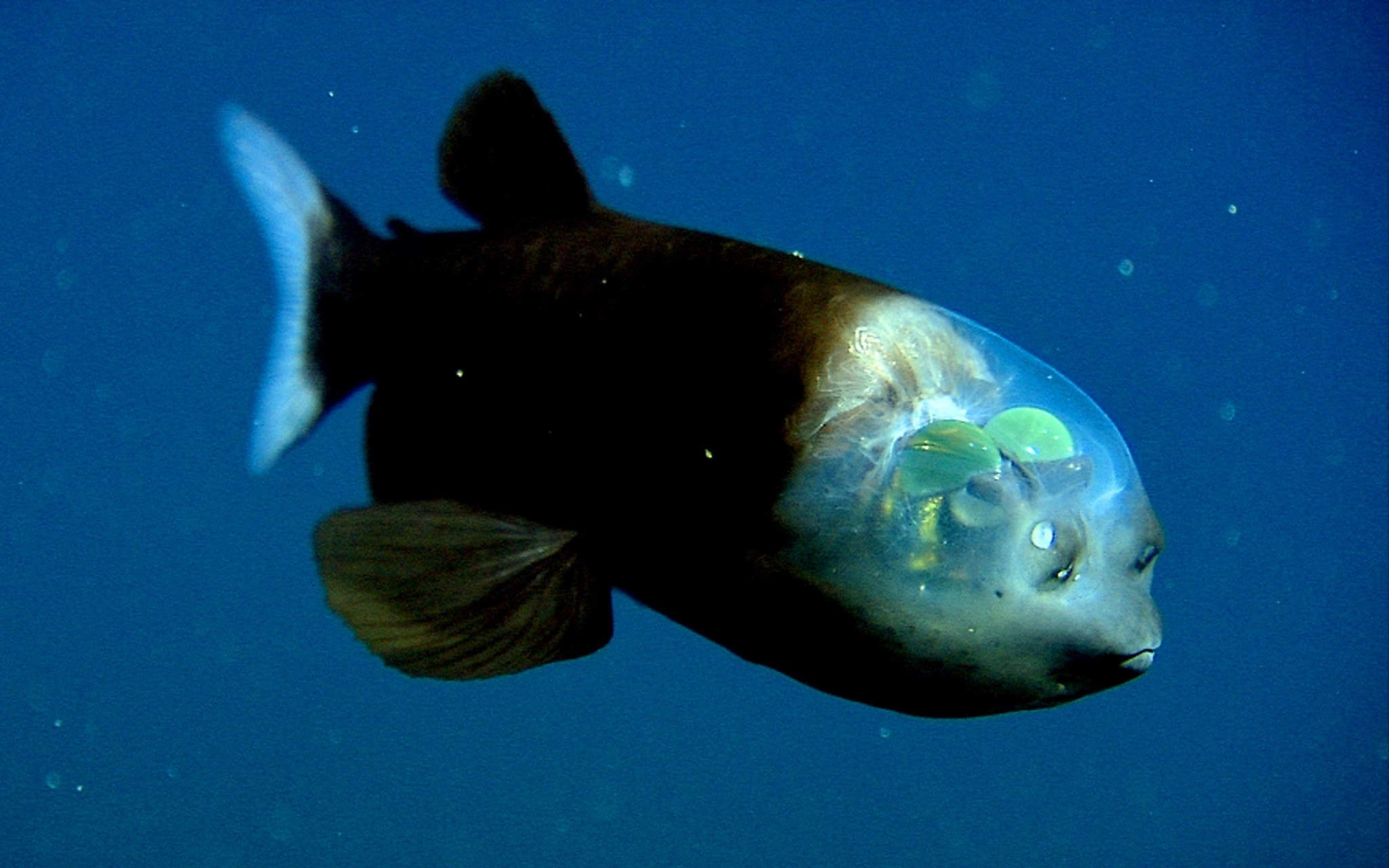
Barreleye
Giant Isopod
If large insects, in particularly roaches and centipedes, make you nervous then the Giant Isopod will leave you absolutely sweating in your seat. The Giant Isopod is found at extreme depths most normally associated with the dark waters around the Arctic Circle and the North Atlantic. While the creature cannot leave the depths, instead stuck to creeping all along the bottom, it is still big enough to absolutely terrify us. Due to the nature of the deep sea the Giant Isopod suffers from ‘gigantism’ which means that these creatures would normally be much smaller at regular depths. Instead, Giant Isopods have been found up to 2.5 feet in length. We wouldn’t want to reel one of these in on the fishing charters.
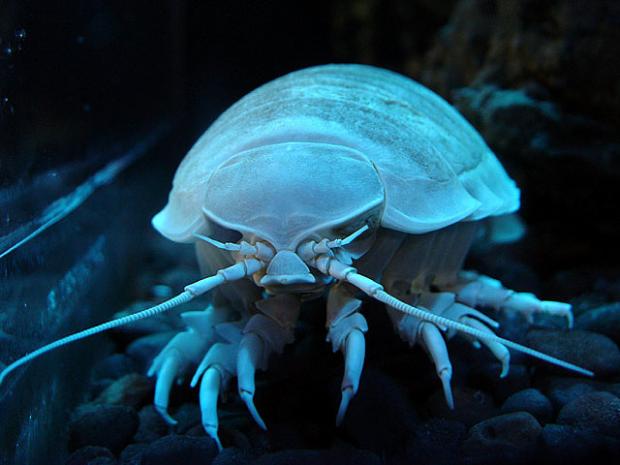
Giant Isopod
Giant Squid
If you ever want a legitimate reason to avoid booking a Caribbean yacht rental then merely consider the existence of the Giant Squid. For generates the Giant Squid was thought to be nothing more than a legend, a myth, something that bored sailors dreamed up on long journeys. However, as we now know, this was not the case. The Giant Squid was officially discovered in 2006 by researching Tsunemi Kubodera out of Japan’s National Science Museum when the invertebrate attacked a bait squid that the research team was using. Since then we’ve begun to learn a lot more about these horrifying creatures. They are the largest invertebrate found on Earth, so far, and the biggest one measured in at an astounding 59 feet. Giant Squids have eight tentacles, a giant beak, and the largest eyes in all of the animal kingdom. Studies show that these Giant Squid are able to kill, and eat, small whales. Yikes.
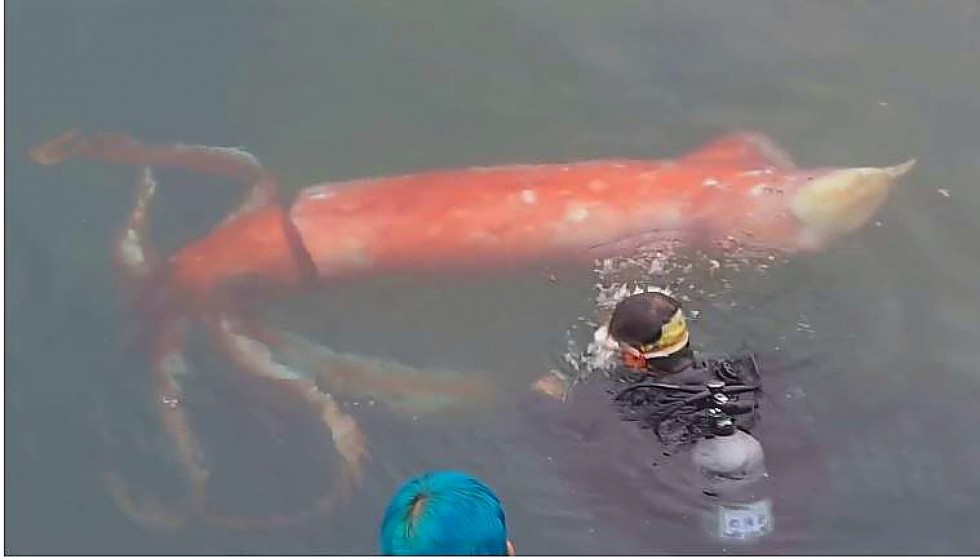
Giant Squid
Dragonfish
What’s in a name, right? The Dragonfish has no resemblance to the dragons of mythology and fantasy but this deep sea creature is scary enough in its own right. The Dragonfish starts life out at the top depths of the ocean due to its egg being buoyant. From there, upon hatching, the Dragonfish makes its way down to the deep inky depths of the sea, living in the 1.5 mile range under water. Like many fish found in this area, the Dragonfish has managed to develop its own biological technology in order to survive. A long, sharp, needle protrudes from its lower jaw and it glows via bioluminescence. This glowing needle attachment is used primarily for hunting but we don’t doubt that it can effectively scare off some predators as well. We’d certainly back away if the Dragonfish drew that on us.
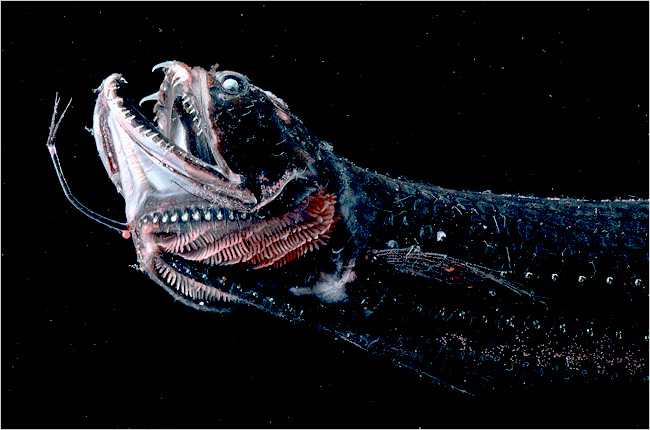
Dragonfish
Blobfish
You can find this totally hideous blobfish in the deep waters off the coasts of mainland Australia, Tasmania, and New Zealand. They can live in depths between 600 and 1,200 m (2,000 and 3,900 ft) where the pressure is actually 60 to 120 times as great as at sea level.
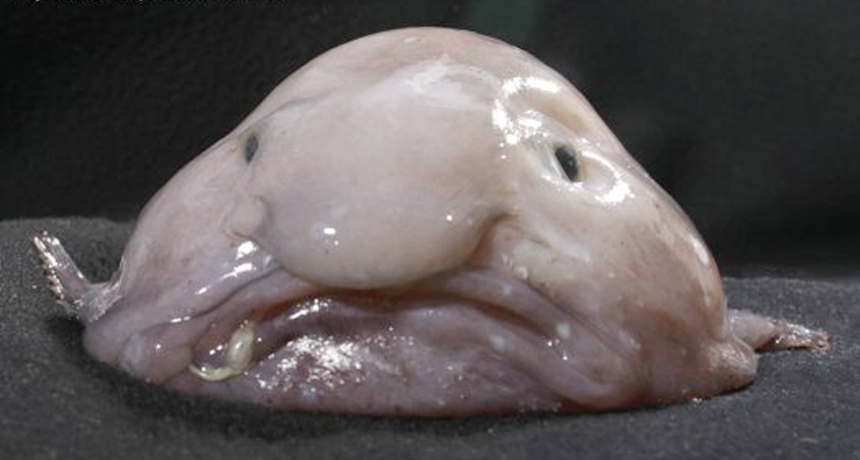
Blobfish
Gulper Eel
The Gulper Eel combines several different traits that make us feel all tingly and weirded out. First off, the Gulper Eel is long with a body ranging around 6 feet. This long and skinny creature comes to a particular point at the head where it draws its name. The Gulper Eel has a disproportionately enlarged head that is reminiscent of that of a pelican. The head has a wide jaw that can open large enough to swallow creatures up to 6 feet in length, the size of its own body. The mouth has a loose hinge that allows the jaws to open and adjust to whatever it wants to eat. Horrifying.
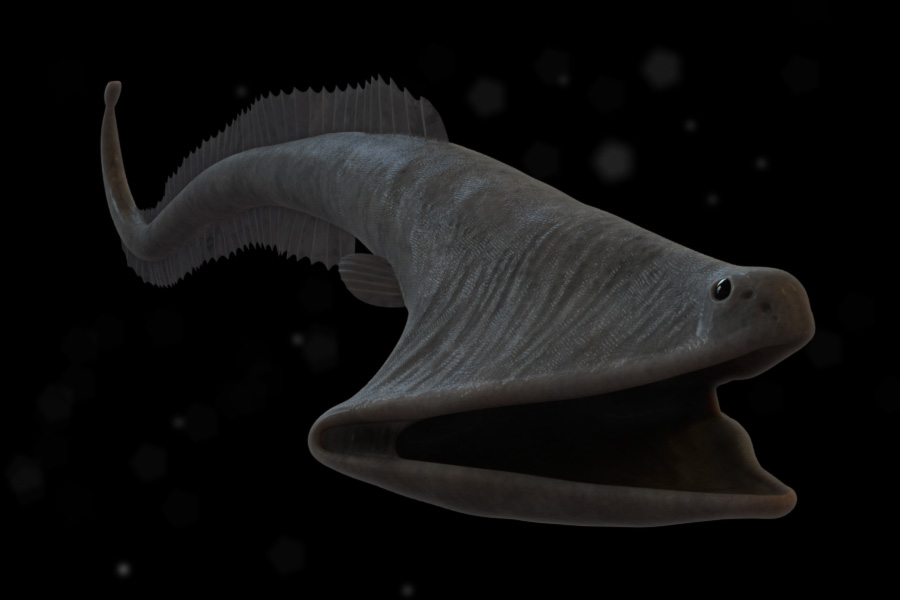
Gulper Eel
Stargazer
By looking just at this creatures name you would assume that it’d be, at the very least, pleasant to look at. This is not the case and we’re sorry you had to see it. The Stargazer is literally a bottom feeding fish. It buries itself underneath sand and then uses the odd placement of its eyes, directly on top of its head, to wait for prey to swim by. Once prey has swam by the Stargazer erupts out of the sand and attacks. Many species of the Stargazer fish have the ability to deal out electric shocks, as well, and some of those shocks are considered lethal. Let’s just say you wouldn’t want to scuba dive over one of these fish if you could avoid it.
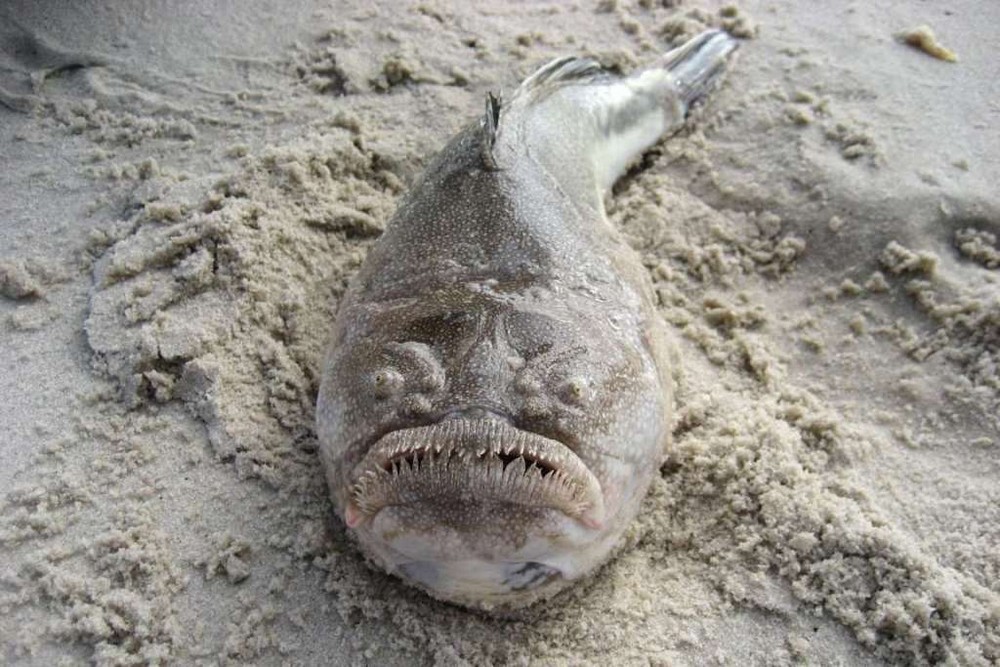
Stargazer
Frilled Shark
Take the absolutely terror inducing traits of a snake and then combine it with the size and danger of a shark with rows and rows of teeth. Welcome to the Frilled Shark. The Frilled Shark is one of the creepier creatures on this list thanks to its odd appearance and absolutely deadly mouth. The Frilled Shark lines up at about six feet in length and its body is long and frumpy like a snake. With a widened head and a focused jaw, the Frilled Shark is excellent at constricting and then eating its prey. Yes, we said constricting — like a snake. Oh, and the Frilled Shark has 25 rows of teeth, so that’s nice.
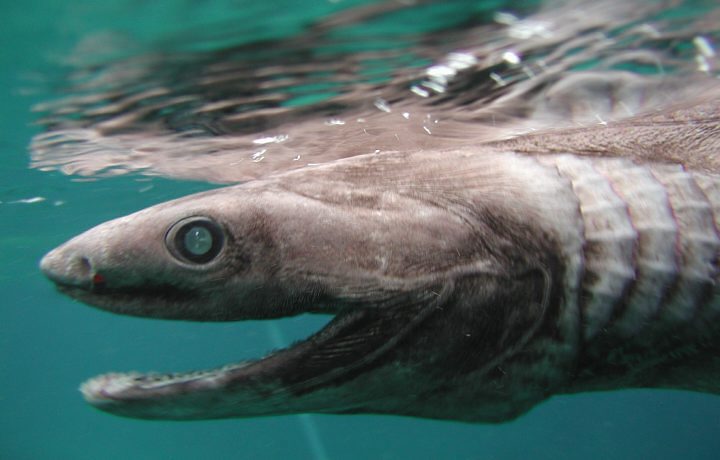
Frilled Shark
Megamouth Shark
One of the rarest deep sea sharks on the planet, the Megamouth Shark is still mostly a mystery to scientists. What we do know about the shark is that it is brown and black with a gigantic mouth that is likely used to eat all manner of smaller sea creatures, just like the whale shark and basking shark. However, what makes this creature worthy of our list is that it sits at around 18 feet and has completely dead, large eyes. The first Megamouth ever found was near Hawaii back in 1976.
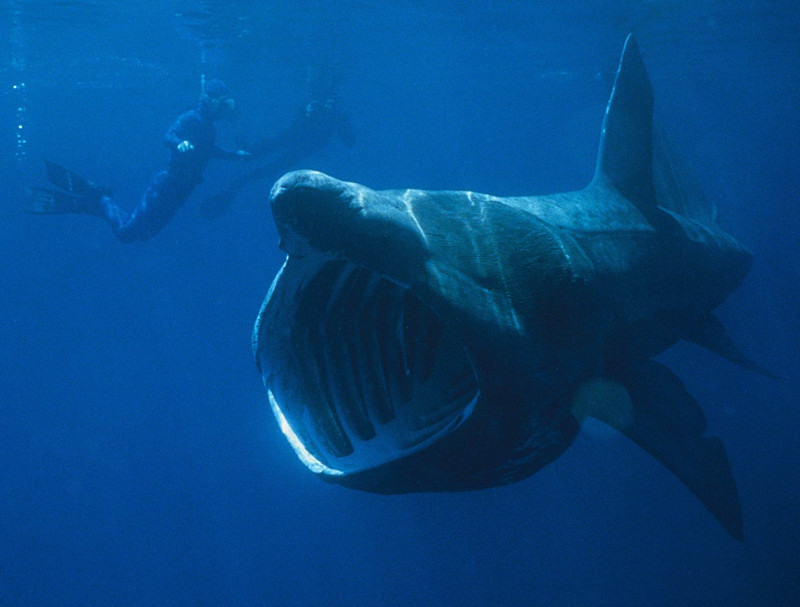
Megamouth Shark
Pacific Viperfish
It’s crazy to think what nature will do to make sure that creatures evolve enough to survive. The Pacific Viperfish is a deep sea creature that uses its glowing belly to attract prey. Once there the Pacific Viperfish closes its huge draws around its prey and eats them up. This fish lives 4,500 meters below the depths of the sea and it has teeth so large that it literally can never close its mouth.
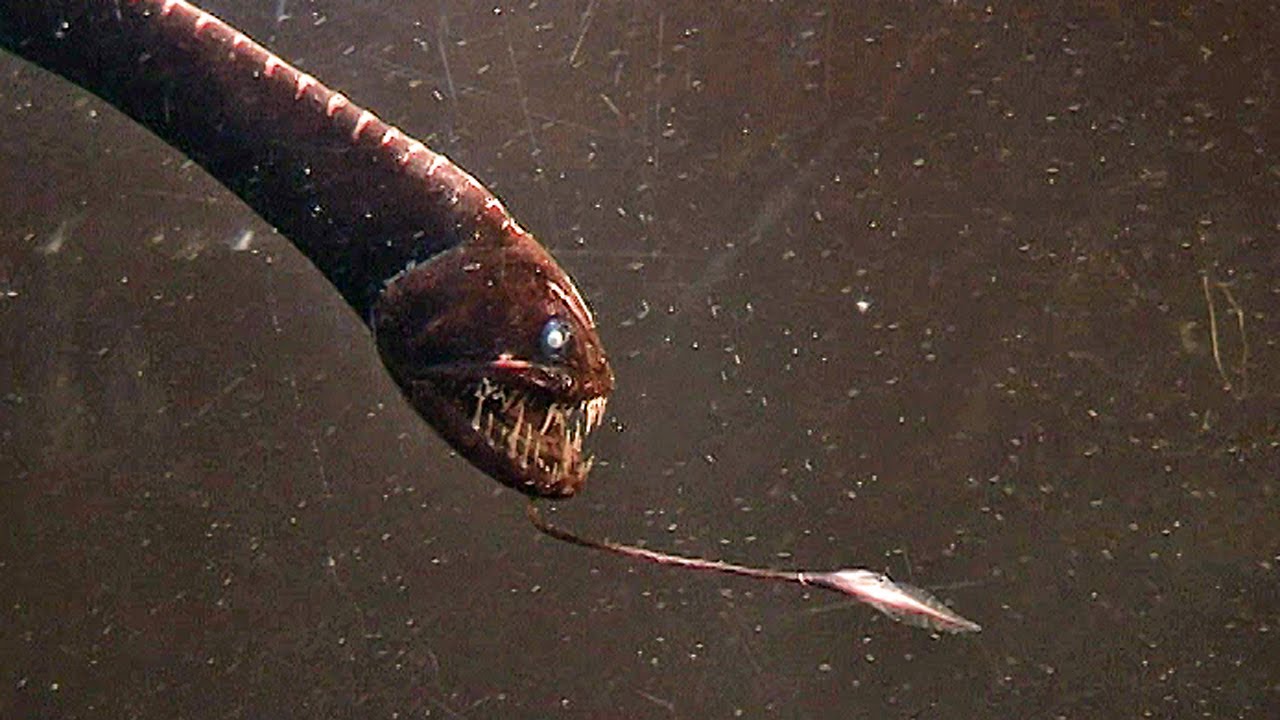
Pacific Viperfish
Humpback Anglerfish
You have to be a savage sort of fish to actually fish while underwater. The Anglerfish is supremely popular thanks to an appearance in the film Finding Nemo but most ocean dwellers aren’t happy to see it hanging around. The Humpback Anglerfish is a wide jawed creature with a protruding stalk coming out of its forehead that is used to lure in prey.
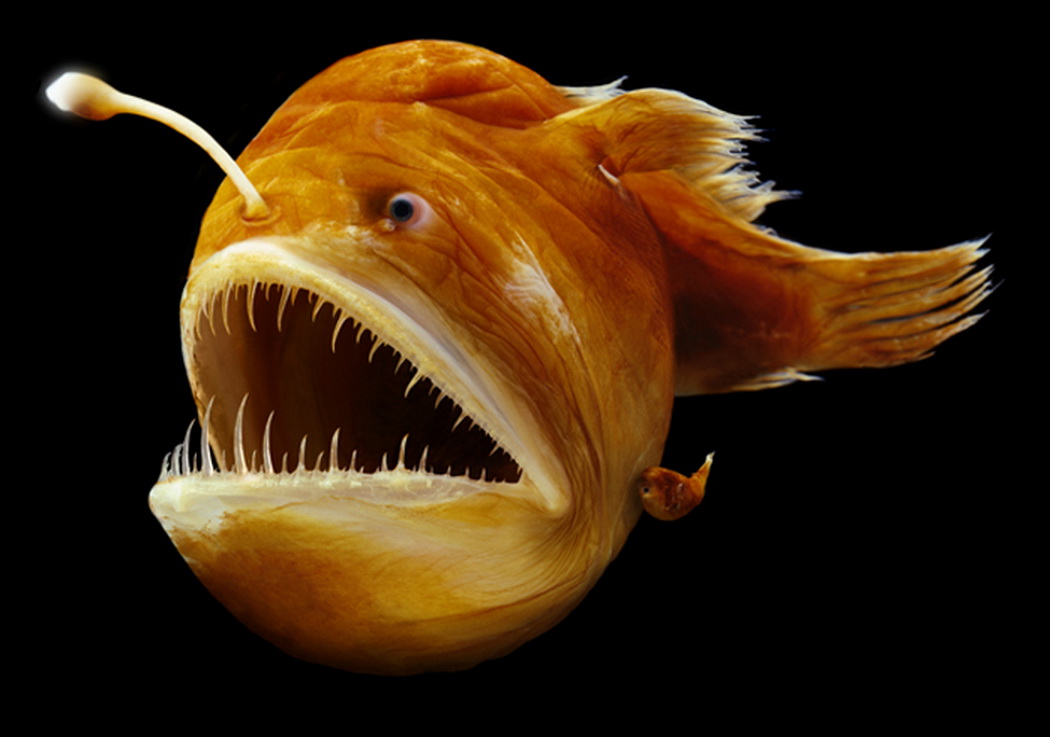
Humpback Anglerfish
Blue Ringed Octopus
Don’t get it twisted, the Blue Ringed Octopus doesn’t make this list due to its physically imposing nature. In fact, the octopus is rather small and actually quite pleasant to look at thanks to its wide array of colorful markings. However, the Blue Ringed Octopus is probably the most dangerous creature in the ocean. This octopus has enough venom within its body to kill up to seven adult males. There’s also no antivenom known to man. So, watch out.
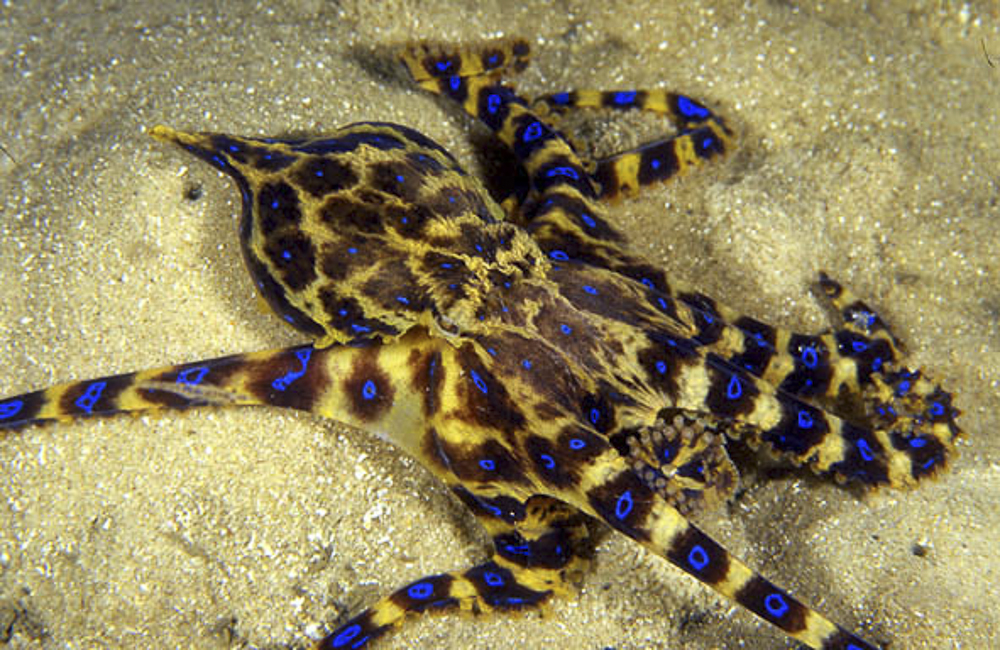
Blue Ringed Octopus
Giant Spider Crab
There are very few ways to describe the Giant Spider Crab without using the words “jaw droppingly horrifying”. This is the largest crap on earth and it calls home to about 1,000 feet underneath the sea. From claw tip all the way to the other claw tip this sea creature measures about 12 feet in length. It is a Godzilla like creature that is similar in appearance to the creepiest spider of your dreams. Only it is underwater, and fast, and with gigantic claws.
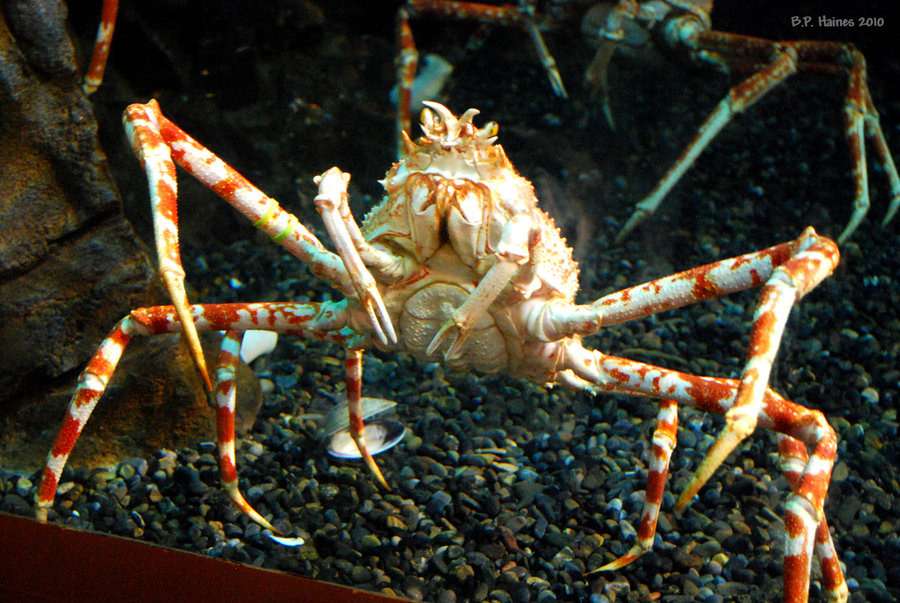
Giant Spider Crab
Goblin Shark
Listen, there are much bigger sharks in the ocean than the Goblin Shark but this one makes the Top 2 based on aesthetical reasons alone. The Goblin Shark is a deep sea shark that is so old it is considered a ‘living fossil’ with studies showing the creatures line to be almost 125 million years old. These sharks sit at around 12 feet in length. Though that is large what most people focus in on is the protruding brow, giant mouth, and outward facing teeth. The Goblin Shark looks like something dreamed up by Jim Henson on an acid trip and we wouldn’t want to spend a second with one while in the water. When feeding the Goblin Shark’s jaws actually widen like a puppet, becoming almost cartoonishly large.
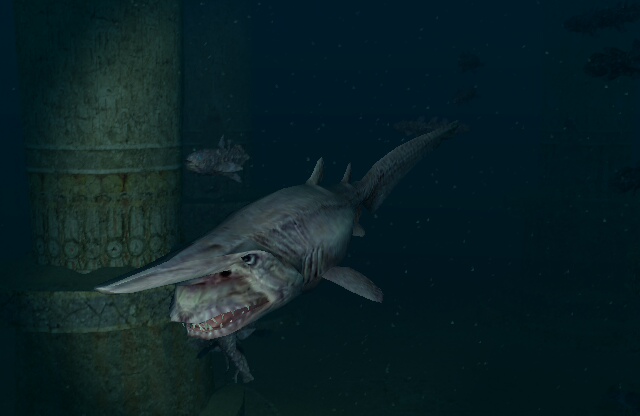
Goblin Shark
Comb Jelly
While this phylum of invertebrate animals living in marine waters worldwide may not look that scary, it’s a scary one to encounter for sure. As they are the largest animals that can swim in the cilia family. Just so you know, they can can eat ten times their own weight in a day.
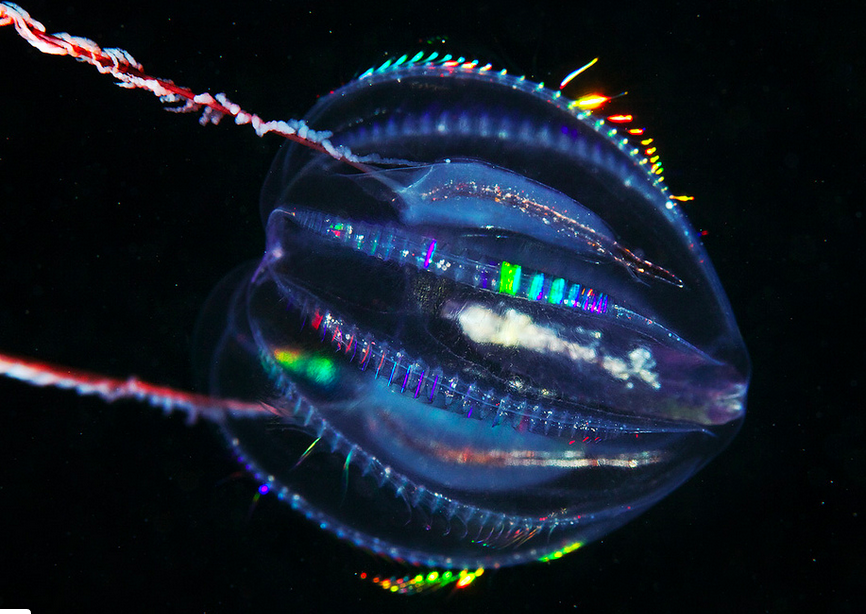
Comb Jelly
Vampire Squid
Meet the small, deep sea cephalopod that is found throughout the temperate and tropical oceans of the world, and yes it does share similarities between a squid and an octopus. This animal’s dark color, cloak-like webbing, and its red eyes give the vampire squid its name but it does NOT feed on blood.
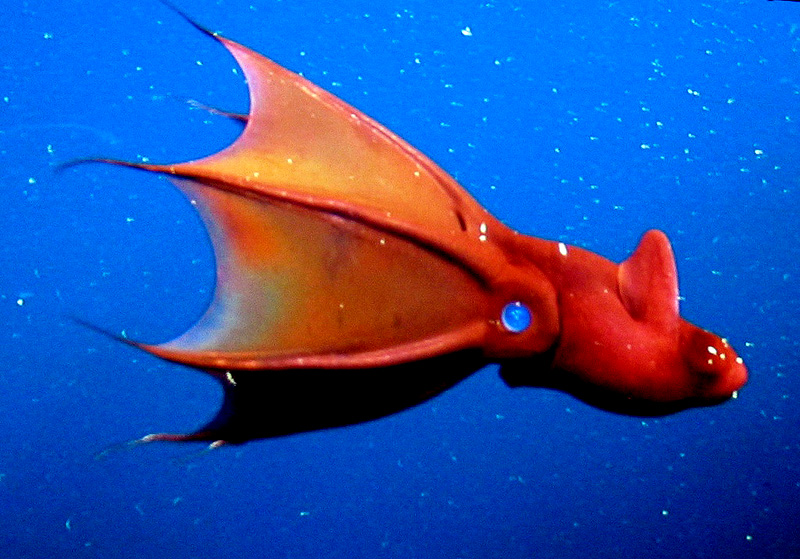
Vampire Squid
Fangtooth
You can typically find the Fangtooth deep sea creature in tropical and cold-temperate waters. It was named for its disproportionately large figure, fang-like teeth and unapproachable visage, but in reality, Fangtooths are quite small and harmless to humans.
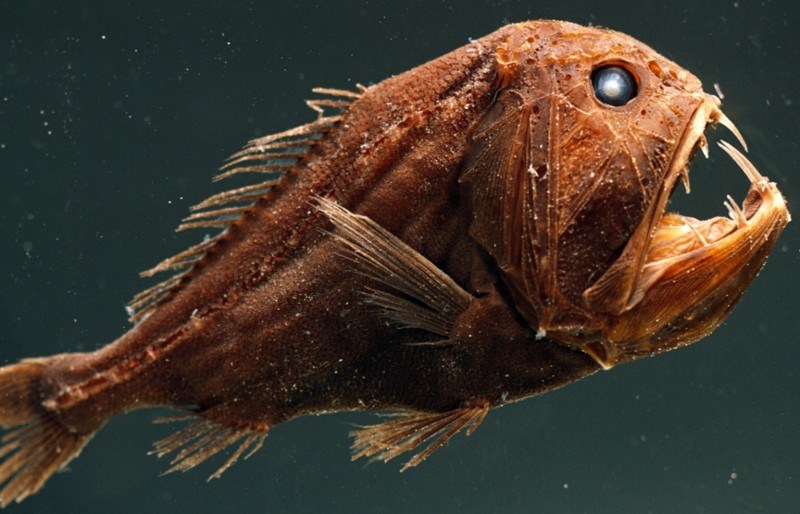
Fangtooth
Scorpionfish
Also known as Scorpaenidae, a mostly marine fish that just so includes to include many of the world’s most venomous species. Gulp. They possess a type of “sting” that comes in the form of sharp spines that are coated with venomous mucus.
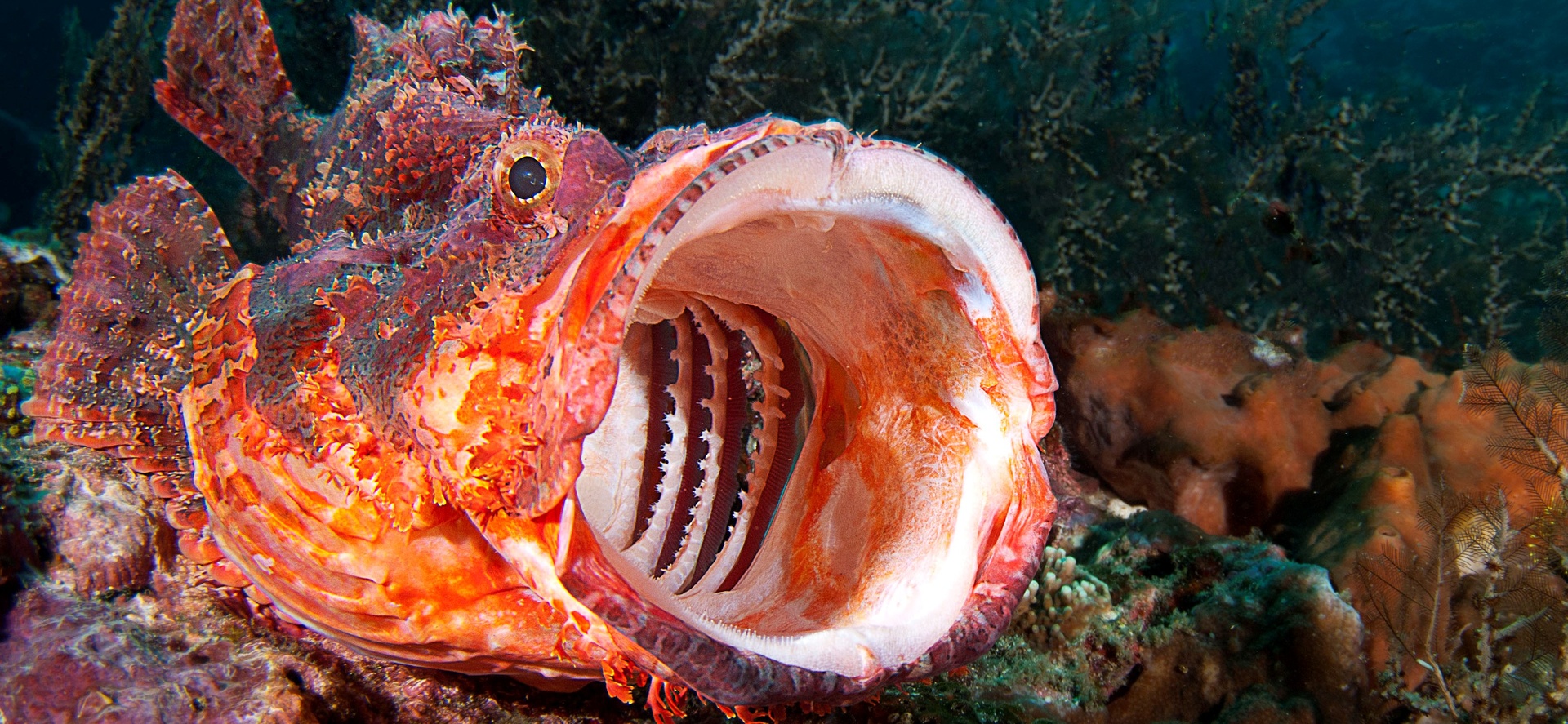
Scorpionfish
Snaggletooth
There are any number of small, deep sea stomiid fish in this genus of Astronesthes. They have a bioluminescent red chin barbel which is used as a lure to attract small prey and they also have delicate skin, and mouths that are filled with sharp, needle-like, curved teeth. Freaky.
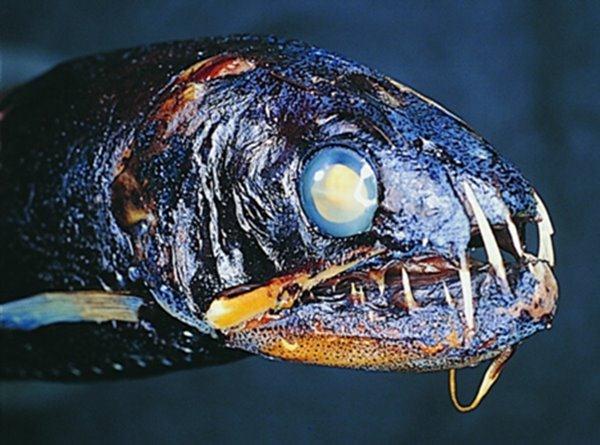
Snaggletooth
Deep Sea Pompeii Worm
Ugh, meet the species of deep sea polychaete worm (which is commonly referred to as “bristle worms”). It can be found only at hydrothermal vents in the Pacific Ocean, and was discovered in the early 1980s off the Galápagos Islands by French marine biologists.
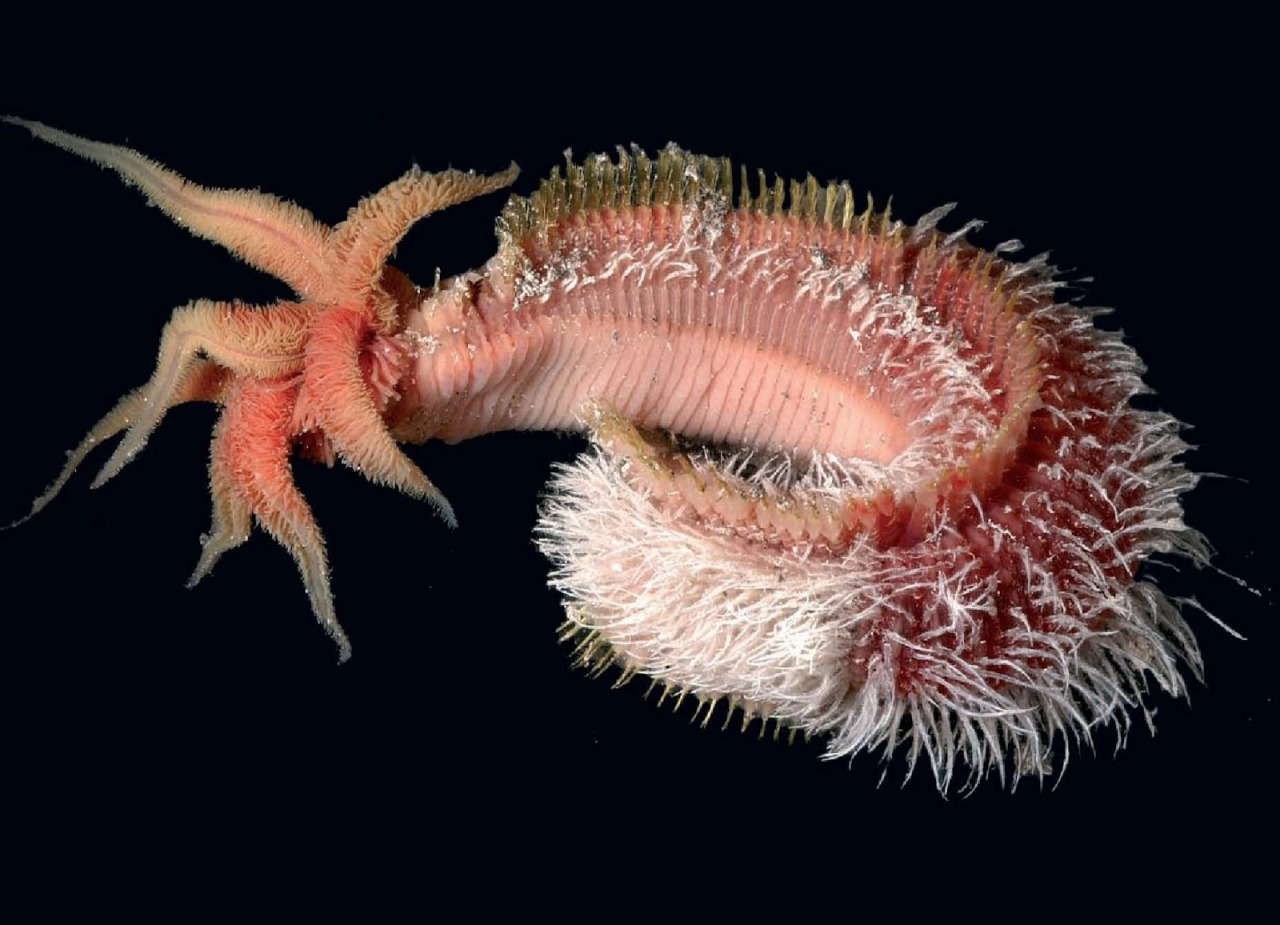
Pompeii Worm
Monkfish
If you happen to be a North Sea fishermen, then you know this fish as the “monk” or “monkfish”. For the rest of us, all we need to know is that this fish has a wide mouth that extends all around the circumference of its head, and both jaws are also armed with bands of long, pointed teeth.
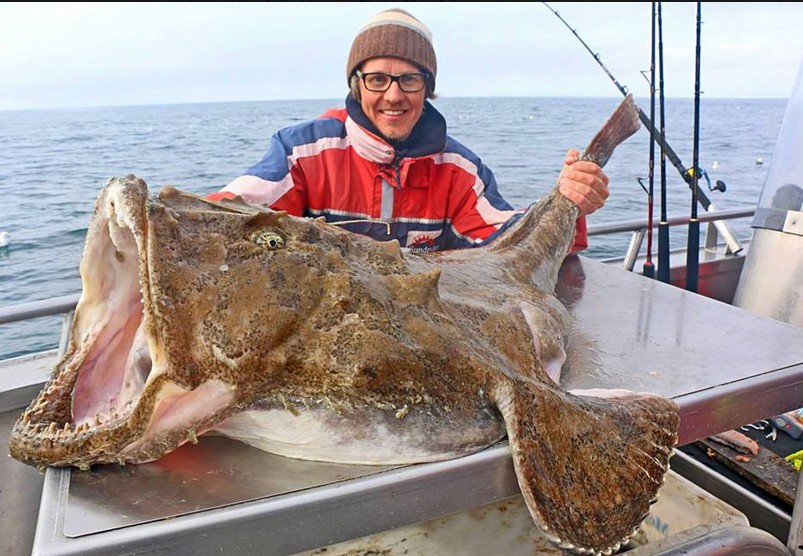
Monkfish
Grenadier
This particular fish can be found in the greatest of depths from the Arctic to Antarctic, additionally its members of this family are among the most abundant of the deep sea fish.
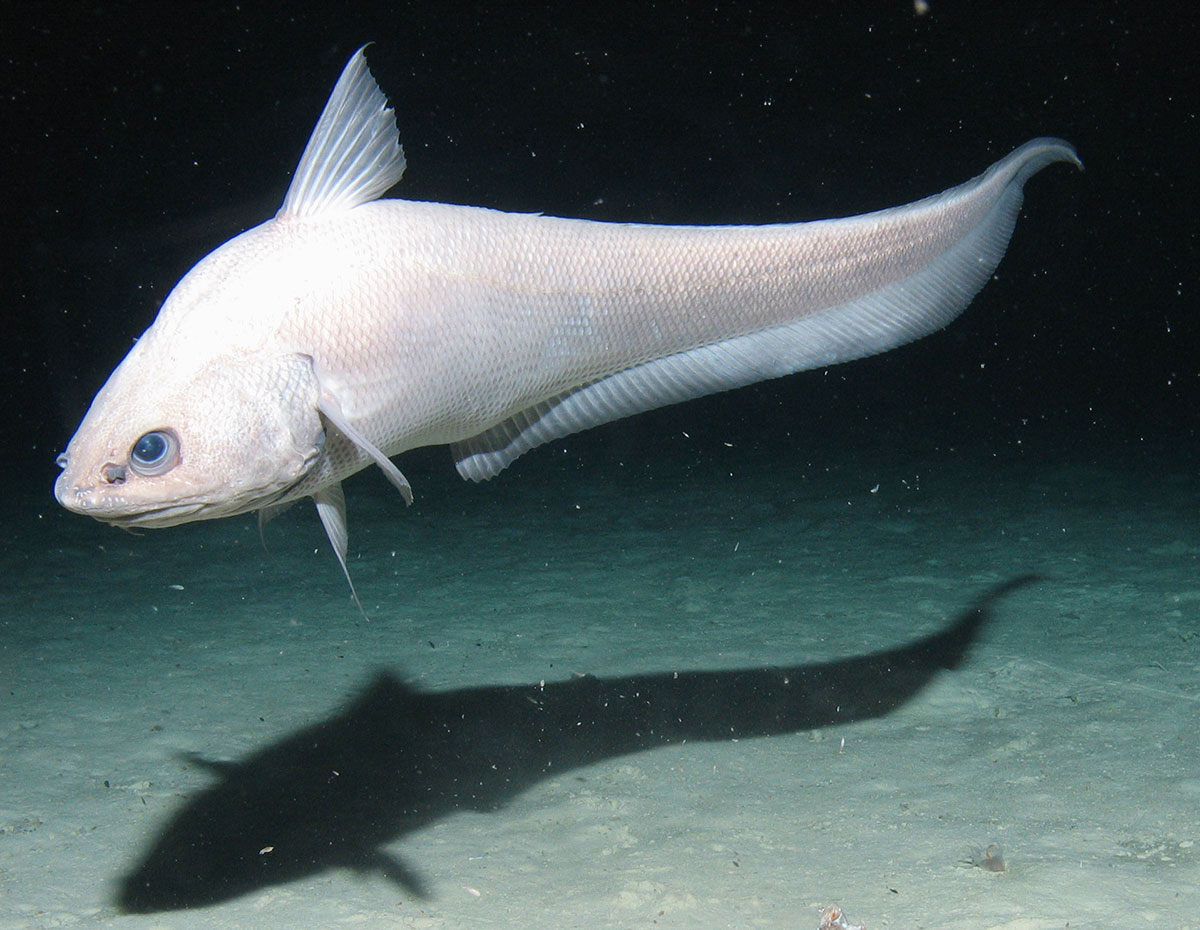
Grenadier
Deep Sea Hatchetfish
Typically you can find this odd fish deep in the tropical, subtropical and temperate waters of the Atlantic, Pacific and Indian Oceans. They’re a rather small deep sea fish which has a peculiar body shape along with bioluminescent photophores.
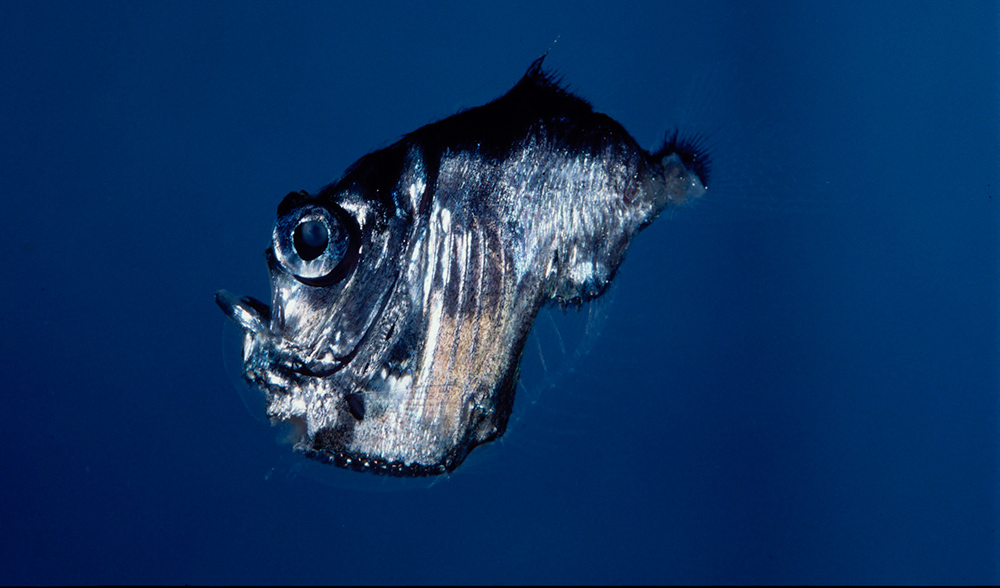
Hatchetfish
Big Red Jellyfish
This peculiar jellyfish was only discovered in 2003, and is the only member of its genus that is yet to be identified. As if it wasn’t freaky enough, its also one of the largest sea jellies. These all red jellyfish live at ocean depths of a startling 600 to 1,500 metres (2,000 to 4,900 ft) and can be found across the Pacific Ocean in the Gulf of California, Monterey Bay, Hawaii and Japan. They can grow up to 76 centimetres (30 in) in diameter.
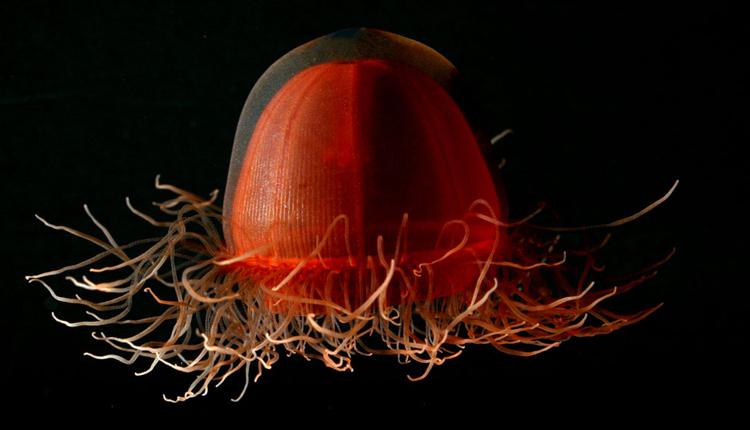
Big Red Jellyfish
Nudibranch
These aren’t so much scary as they are cool looking. The Nudibranch is a soft-bodied, marine gastropod molluscs which can shed their shells after their larval stage. They arlso have extraordinary colors and striking forms, and currently, there are about 2,300 valid species known.
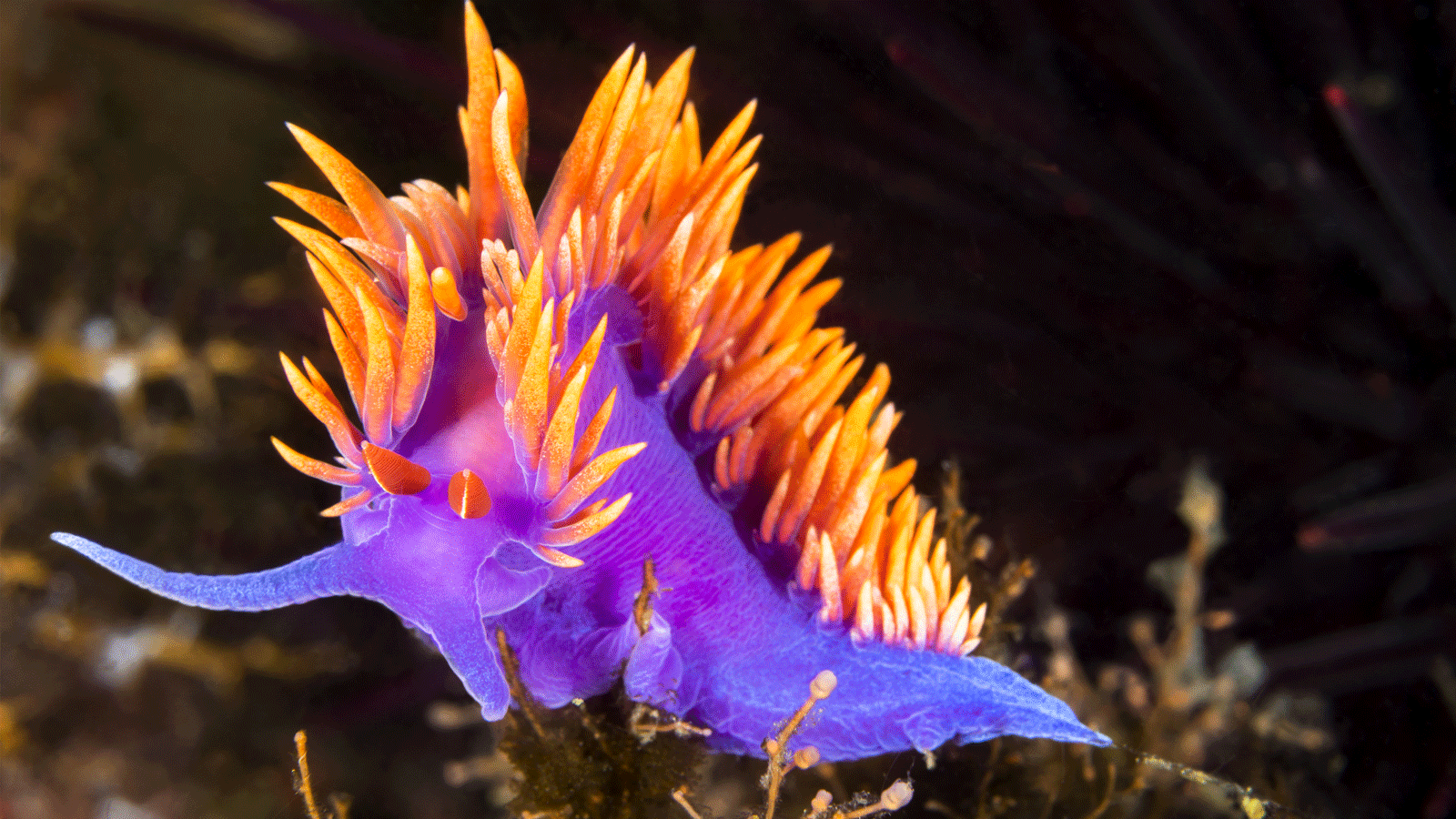
Nudibranch
Glass Squid
There are about 60 species of glass squid, which are also known as cockatoo squid, cranchiid, cranch squid, or bathyscaphoid squid. Cause the more names it has, the less scary. While some species tend to live close to the surface, there are some that can be found some 2 km below sea level.
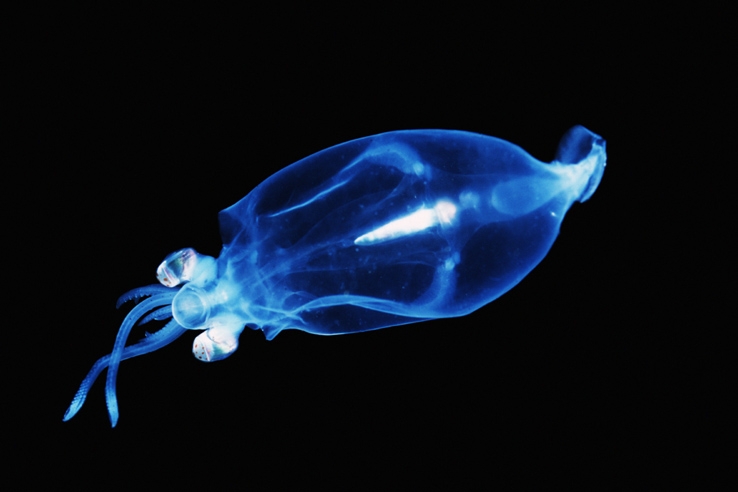
Glass Squid
Dumbo Octopus
These funny named dumbo octopus live in the deep sea and most have prominent ear-like fins which protrude from the mantle just above their lateral eyes. Additionally, they all seem to have a U or V shaped shell in their mantle, giving them a bell shaped appearance. While on the other hand, some species are short, squat and yellow, and some also have suckers, in addition to spines, on all 8 webbed arms.
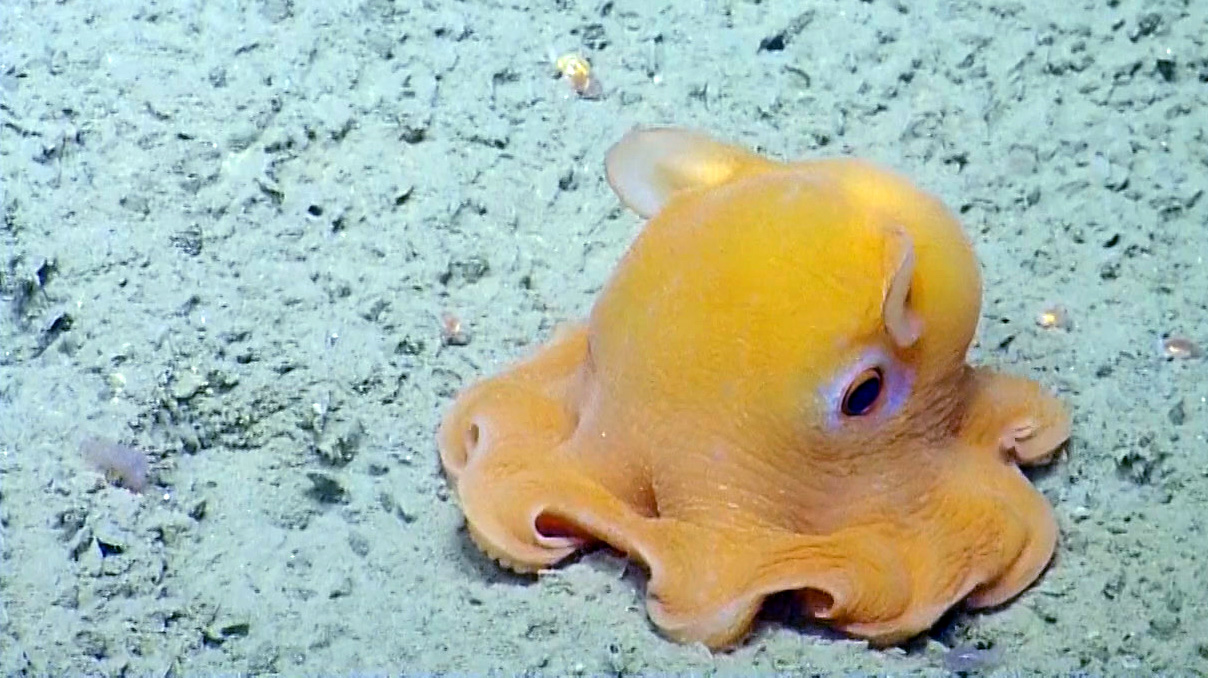
Dumbo Octopus
Coffinfish
This freaky looking fish can be found in the salty temperate waters of southwestern Pacific and also off east coast of Australia. It can also be found in the staggering depths of 164–984.3 ft (50 – 300m). Coffinfish have a flabby and spiny body and an illicium on the snout which can be lowered into a groove.
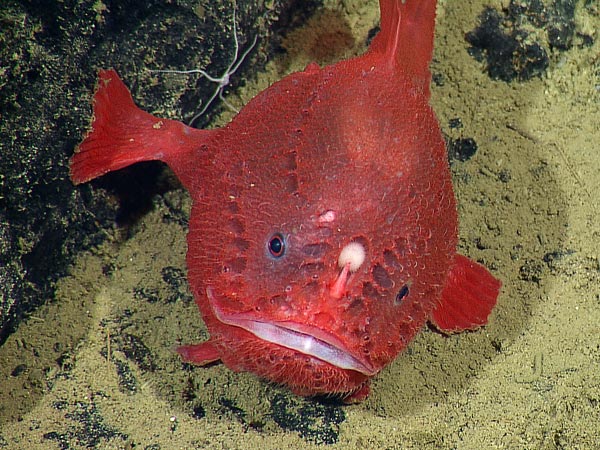
Coffinfish
Chimaera Fish
Once upon a time, their closest living relative was the sharks! Howevery they have long branched off from sharks some 400 million years ago and remain isolated ever since. Today, you can find them pretty much confined to the deep waters.

Chimaera Fish
Amphipod
There are more than 9,900 amphipod species that have been described so far. Amphipod are mostly marine animals and can also be found in almost all aquatic environments.

Amphipod
Pacific Blackdragon Fish
This fish lives so deep in the Atlantic Ocean, that its beyond where any plant life grows or even light reaches! That’s about 1500 to 4500 meters below the surface.
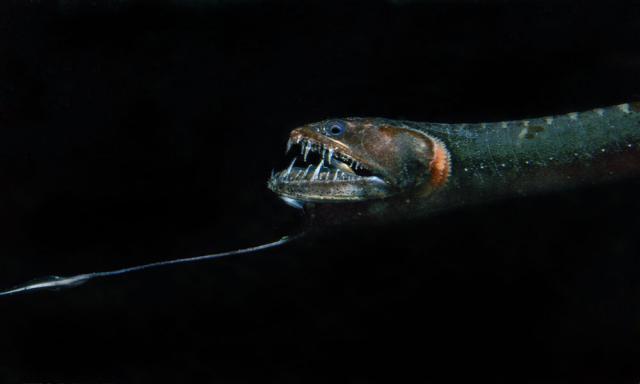
Pacific Blackdragon Fish
Stonefish
This fish is extremely dangerous, in fact, it is one of THE most venomous fish known. And yes, we do mean to humans! They tend to be found in the coastal regions of the Indo-Pacific.
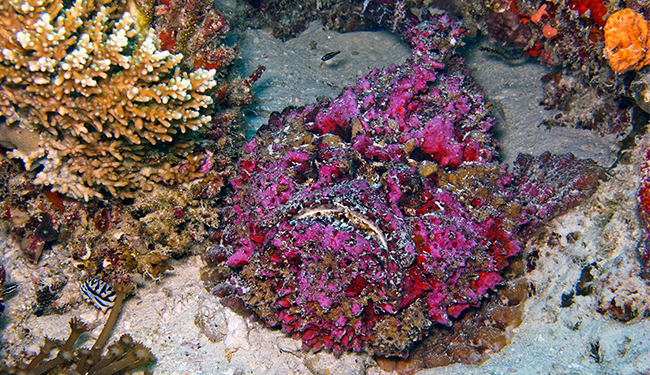
Stonefish
Sea Pig
Also known as Scotoplanes (but come one, sea pig is SO much cuter) live on deep ocean bottoms, specifically in the Atlantic, Pacific and Indian Ocean, and typically in depths of over 1200–5000 meters. Before you ask, yes they are deposit feeders who obtain food by extracting organic particles found in the deep sea mud. Yum?
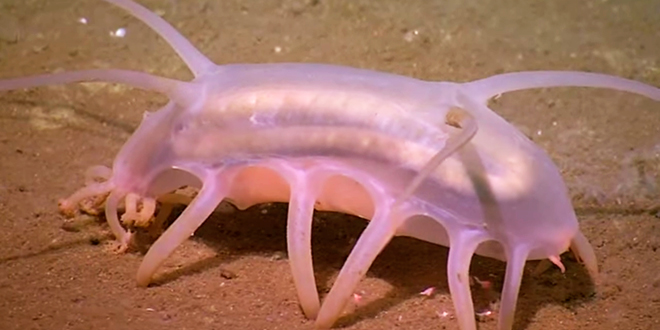
Sea Pig
Sea Cucumber
What a fun name, wouldn’t you say! Yes, they are in fact marine animals that have a leathery skin and elongated body, ergo, how they got their name. Sea cucumbers can be found on the sea floor worldwide.
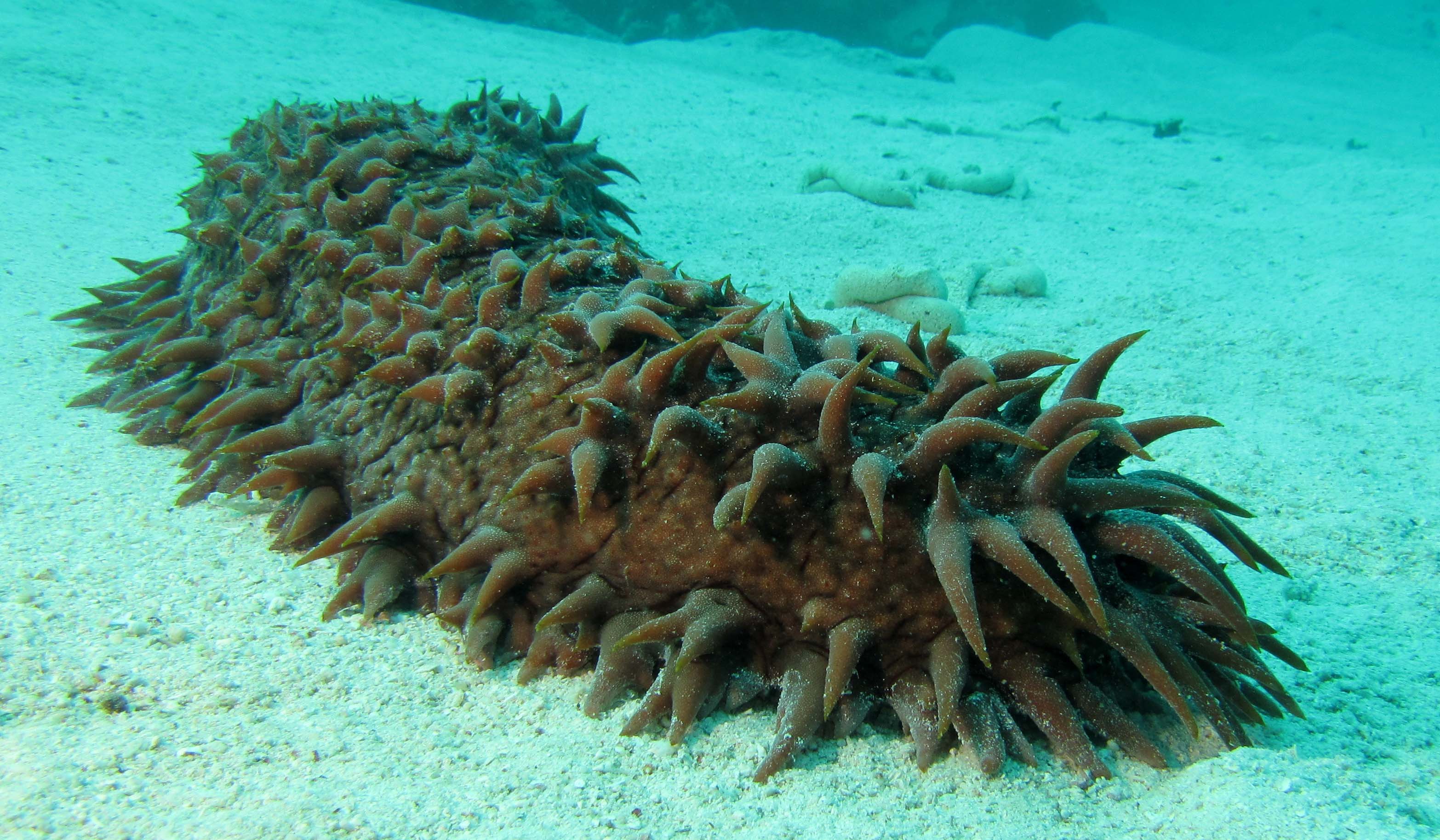
Sea Cucumber
Sarcastic Fringehead
These guys have quite the name, don’t they? This small but extremely hardy fish has a large mouth and a rather aggressive territorial behavior, which is how it got its common name.
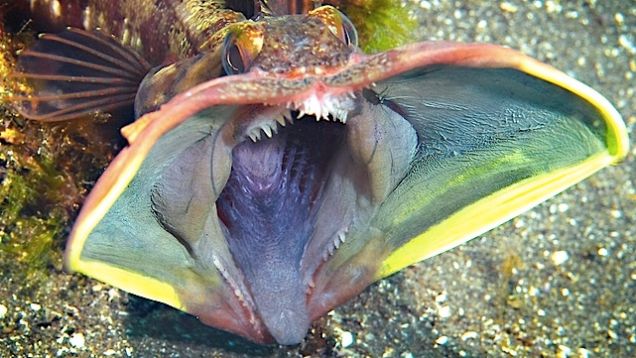
Sarcastic Fringehead
Black Swallower
You guessed it, the black swallower got its name due to its uncanny ability to swallow fish larger than itself. Freaky to say the least! You can only find it in depths of 700–2,745 m (2,297–9,006 ft).
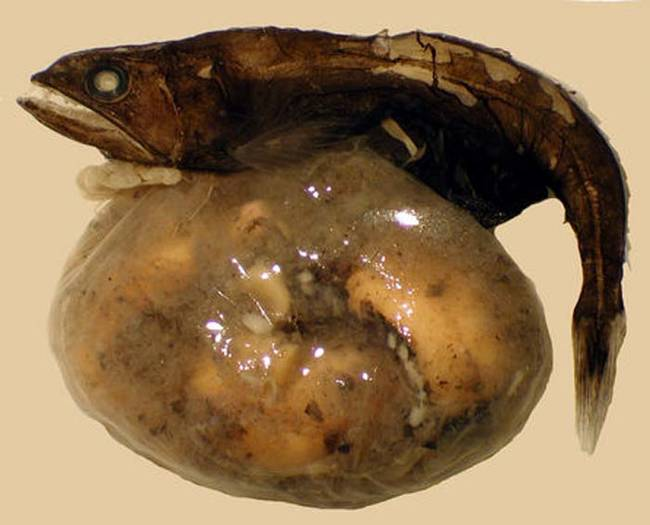
Black Swallower
Red Octopus (Stauroteuthis syrtensis)
These creepy guys are also known as….. glowing sucker octopus. Gross. It has rows of glowing bioluminescent suckers that trail down its eight arms and it glows in the deep sea.
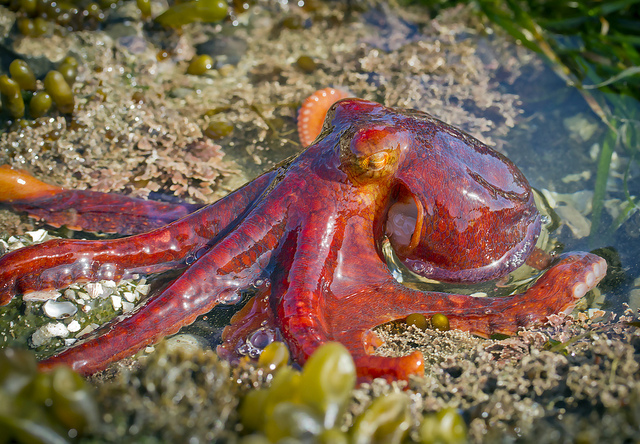
Red Octopus (Stauroteuthis Syrtensis)
Zombie Worms (Osedax roseus)
Yeah, these guys are just weird and totally creepy. Just as their name says, they’re “bone eaters”, specially they are worms that bore into the bones of whale carcasses so that they can reach enclosed lipids, which they need for sustenance.
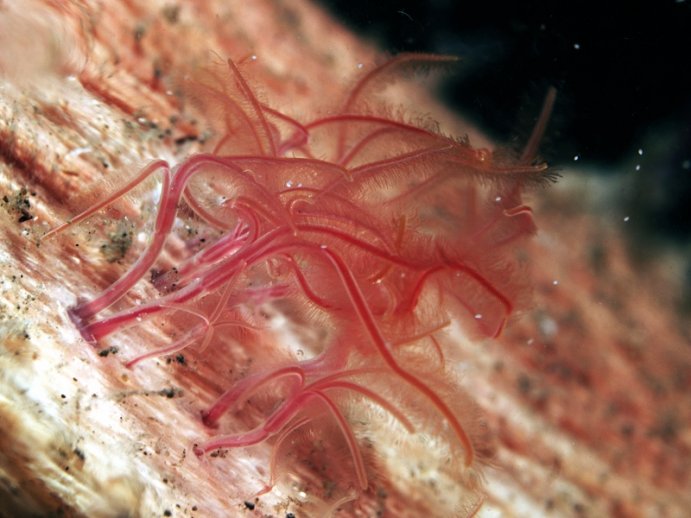
Zombie Worms (Osedax Roseus)
Sloane’s viperfish
Currently this odd fish holds the world record for having the largest teeth relative to its head size in a fish. The teeth has so large that it has to open its mouth to make the jaws vertical before it can even swallow its prey.
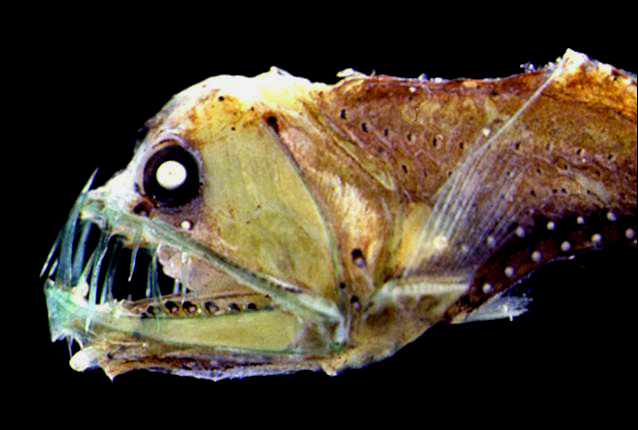
Sloane’s Viperfish
Oarfish
As you can see, this is a pretty long fish! In fact, it is the longest bony fish alive, growing to up to 11 m (36 ft) in length. There are also a ton of theories out there the the oarfish can predict earthquakes but there’s no proof of that.
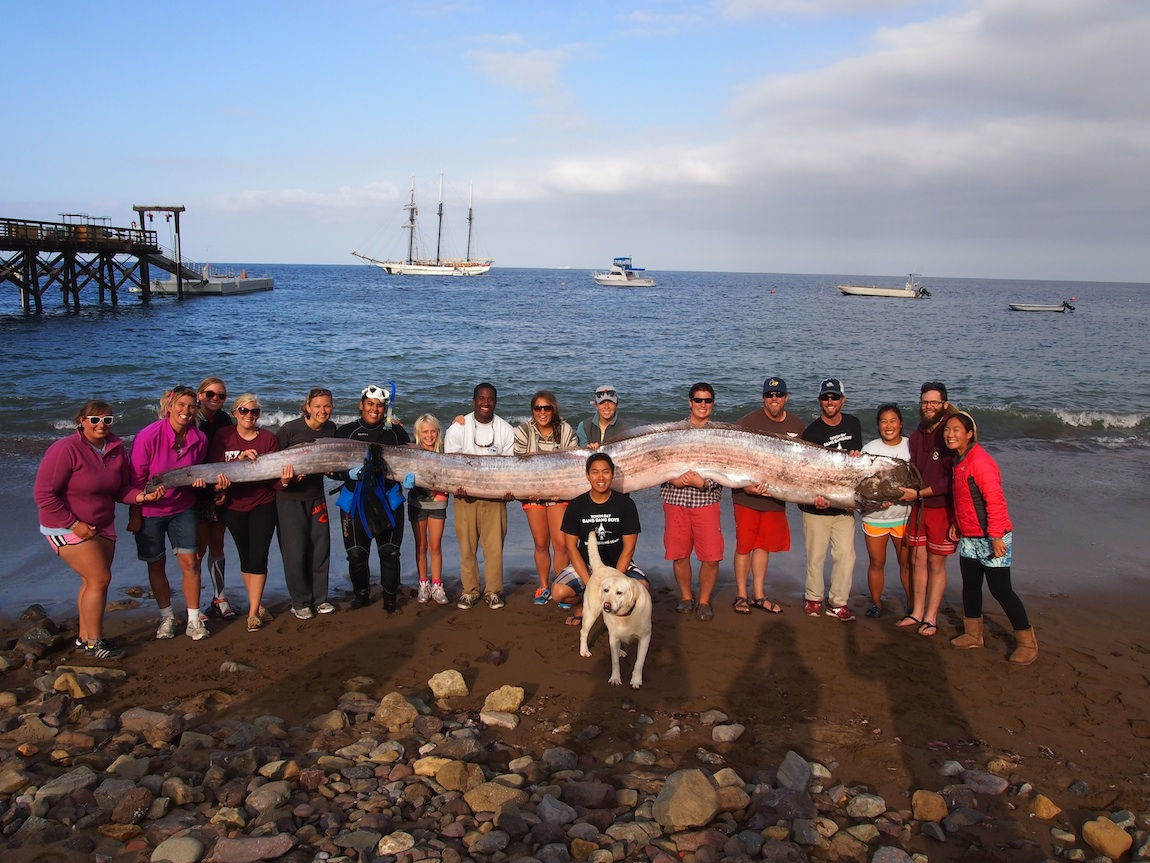
Oarfish








